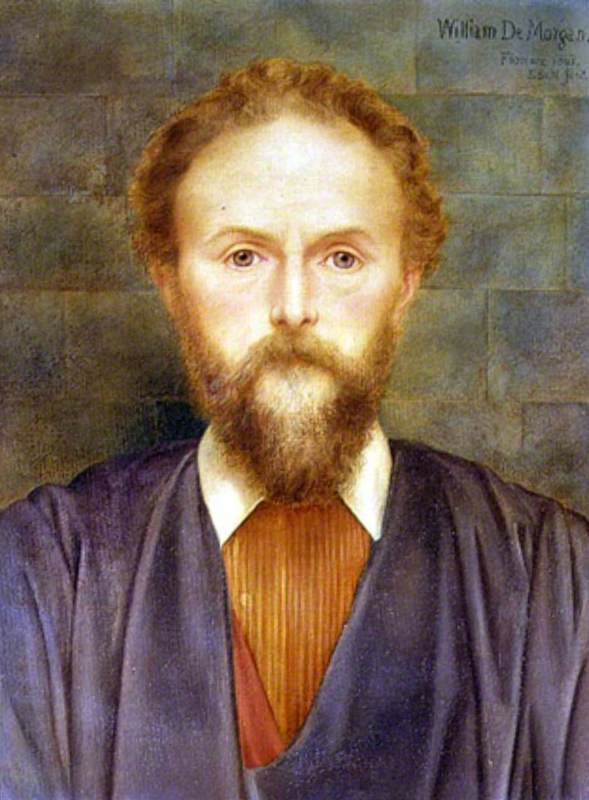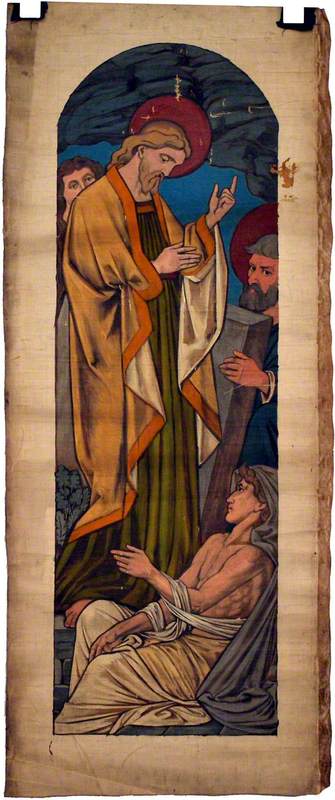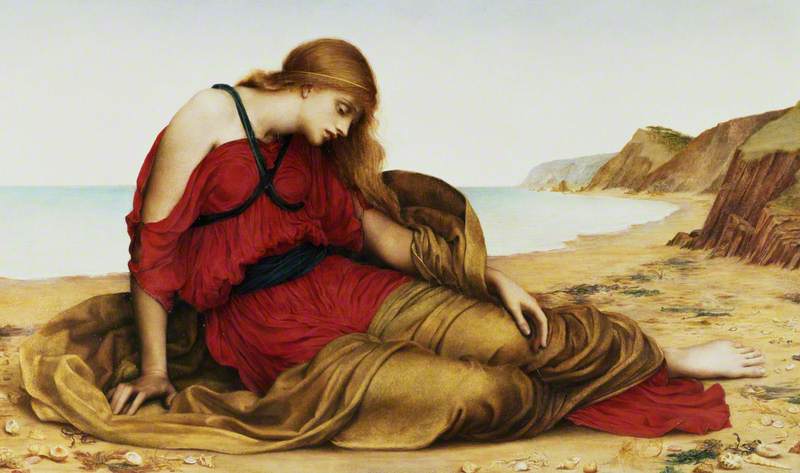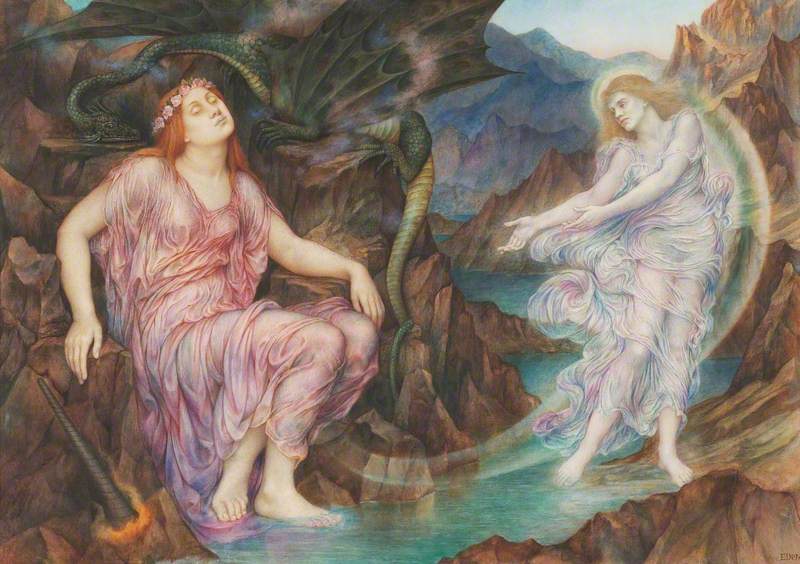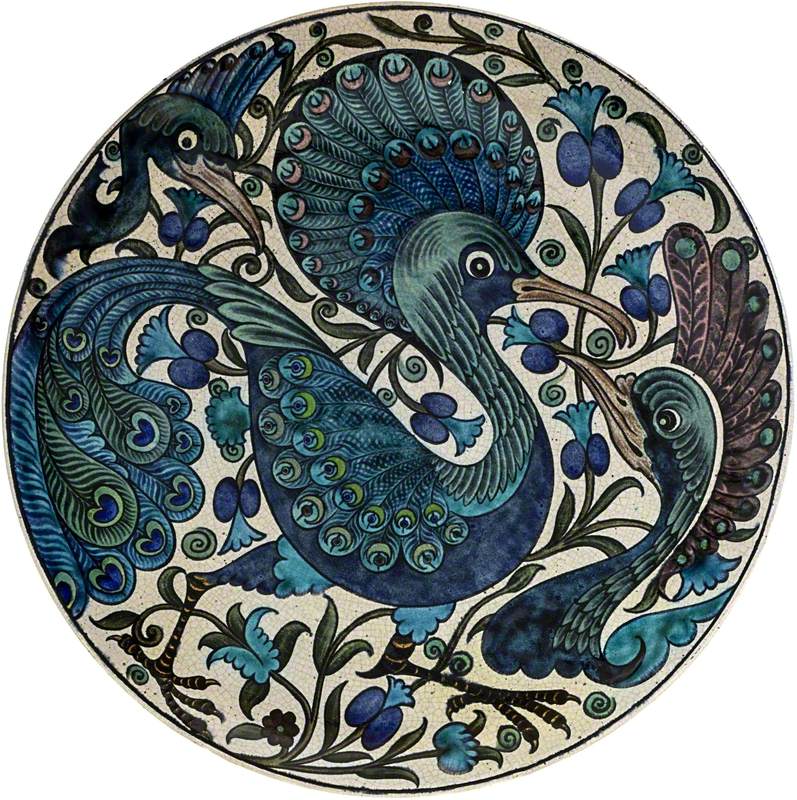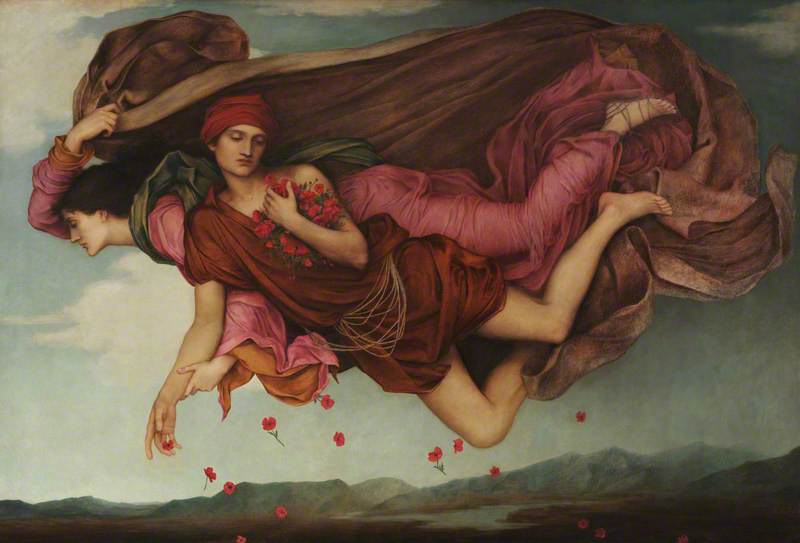Artists William and Evelyn De Morgan spent their lives creating artwork for a better, more beautiful world. Evelyn’s visionary Pre-Raphaelite paintings communicate her pacifist and spiritualist moral messages. William created handmade ceramics in rejection of modern production and the ills of an industrialised city. Their artworks are cared for and shared by the De Morgan Foundation at the De Morgan Museum at Cannon Hall, and in exhibitions across the country.
Art Unlocked is an online talk series by Art UK in collaboration with Bloomberg Philanthropies. This Curation is based on a talk by Sarah Hardy, Curator-Manager at the De Morgan Collection, on 7th July 2021. You can find a recording at https://youtu.be/GrYRn8mdihc
-
William De Morgan (1839–1917) 1893
This picture was painted by Evelyn De Morgan of her husband William in Florence in 1893. De Morgan seldom made portraits, instead preferring to use her art to depict historical, mythological or visionary scenes which projected her moralising messages. The few portraits which she did paint were reserved for very close family and friends.
This was the first of two portraits which she would paint of her husband, the other was made over a decade later in 1909. This is a deeply psychological picture which captures William De Morgan’s true likeness. It requires a serious consideration of his thoughts and feelings as other props are missing and his stare is direct and unashamed.
Evelyn De Morgan (1855–1919)
Oil on canvas
H 42 x W 30.5 cm
De Morgan Collection
-
Millicent De Morgan (1875–1937)
It is a little-known fact that William De Morgan began his artistic career as a painter. He is much better known for the beautiful iridescent lustreware ceramics he produced. Prior to beginning his career as a ceramic designer however, he studied at the prestigious Cary’s Academy where he learnt to make drawings from the antique cast in order to perfect this skill.
His months of training at Cary’s paid off and he gained a place at the Royal Academy Schools in 1859. Despite his obvious talent as a draftsman, his work in oil on canvas is not as successful. This painting was the only work he ever submitted for a Royal Academy exhibition and it was displayed in 1865. It is believed to be a portrait of one of William's nieces.
William De Morgan (1839–1917)
Oil on canvas
H 49 x W 43 cm
De Morgan Collection
-
The Raising of Lazarus 1863–1872
William enjoyed a great success as a designer of stained glass from 1862 – 1872. It would seem that he became interested in the medium after meeting William Morris and Edward Burne-Jones and being inspired by their commitment to reviving medieval arts. In particular, they had a love of creating stained glass and designing churches.
He made windows for no fewer than 15 churches from Guernsey to Staffordshire and once commented that it made him ‘more [money] than I have ever earned since’. Despite this, there is little scholarship on his stained glass.
This oil painting was probably made to show the client prior to commencing work. In this case, the client was St Michael’s Church in Rocester, Staffordshire.
William De Morgan (1839–1917)
Oil on canvas
H 123.6 x W 50.5 cm
De Morgan Collection
-
Ariadne in Naxos 1877
Evelyn defied her parents and the gender and class expectations placed upon her to become one of the finest artists of her time. She decided from an early age to become an artist, writing in her diary on her 17th birthday ‘art is eternal, life is short. I have not a moment to lose.’
Almost as soon as she graduated from her art school, she began exhibiting and Ariadne at Naxos was the first work she was invited to exhibit at the avant-garde Grosvenor Gallery.
The picture depicts Ariadne from Greek mythology. She is depicted at the moment when she has been abandoned by Theseus after helping him to defeat the minotaur. The feminist artist hints at her disdain of society's abandonment of women by their lovers in the Victorian period.
Evelyn De Morgan (1855–1919)
Oil on canvas
H 59.8 x W 101.2 cm
De Morgan Collection
-
The Passing of the Soul at Death 1910–1919
This picture was probably one of the last that Evelyn De Morgan ever painted. It depicts the moment at the end of life when an angel has come to welcome the human soul onward. The woman in pink has dropped a torch and we see the flame of life is slowly being extinguished. The demon on her shoulders curls up, rejected. He cannot follow where she is going to. Rainbow swirls represent the movement of the human soul from mortal, earthly life, onward to eternal existence.
When William died two years before his wife Evelyn, she designed a gravestone for the pair of them. It is very similar to this painting, with a living figure extinguishing a lit torch and an angelic figure welcoming their spirit.
Evelyn De Morgan (1855–1919)
Oil on canvas
H 78.8 x W 120.8 cm
De Morgan Collection
-
The Hourglass 1904–1905
The Hourglass by Evelyn De Morgan is one of my favourite paintings in the Collection. It is minutely detailed and richly coloured so it seems to reveal more the longer it is studied. From each bead on the lead character’s dress to each thread on tapestry behind her, the whole piece is immaculately rendered.
The themes of spiritualist hope for the salvation of the human soul, and the artists own view that material wealth should be rejected in favour of spiritual wellbeing are obvious in this picture.
But the choice of model reveals a feminist undertone to the painting. It is Jane Morris, who was a professional model for the Pre-Raphaelites and was married to William Morris.
Evelyn De Morgan (1855–1919)
Oil on canvas
H 121.2 x W 108.2 cm
De Morgan Collection
